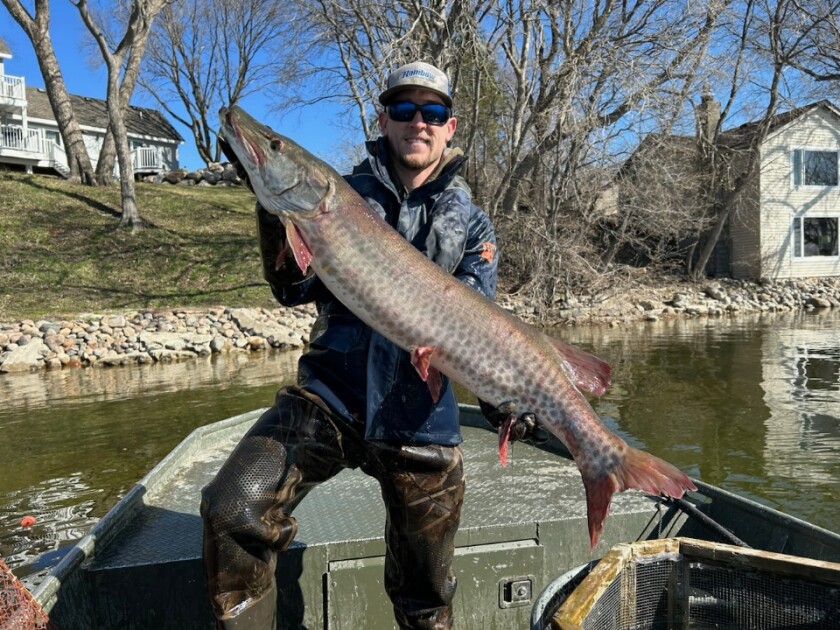NEW LONDON — It’s taking more than 10,000 casts to land a big muskie these days, and those pursuing these elusive pike are urging the state to do more to improve their numbers in the waters where they are managed.
The New London fish hatchery operated by the Minnesota Department of Natural Resources is looking to do exactly that.
ADVERTISEMENT
For the first time in perhaps 25 to 30 years, the hatchery is once again raising muskellunge, or muskie fry, for stocking lakes throughout the state.
The hatchery is busy raising an estimated 50,000 muskie fry, none of them fatter or longer than the average pine needle. They arrived about two weeks ago from the Waterville Hatchery, where they were hatched from eggs, according to Hatchery Manager Jeff Tellock. The eggs were taken from Lake Plantagenet south of Bemidji in Hubbard Country.
Tellock and his helpers are feeding and tending to the young fry in two water-filled fiberglass tanks, also known as races, in which they will grow to between 2 ½ - to 3 ½ inches, and possibly up to 4 inches. Water from the Middle Fork of the Little Crow River is filtered and circulated through the tanks, and monitors assure that oxygen levels never fall below needed levels.
These fry are being fed a newly developed diet, and Tellock said it appears to be much better than the mix that had been used by hatcheries in the past. The newly hatched muskies are most vulnerable during their first two weeks of life, and the new diet appears to have significantly improved their survival rate, he said.

Sometime this summer, the fry will be transferred to some of the 17 outdoor ponds at the hatchery property in New London. Instead of having human-made food sprinkled in front of their faces, they will prey on flathead minnows raised for them.
The young muskies will grow to fingerling size of around 10 to 12 inches in the ponds. This fall, the majority of them will be stocked in some of the 102 lakes managed by the DNR for muskies.
Tellock will keep about 700 of the muskies over the winter by returning them to the tanks in the hatchery. The goal is to raise these muskie over the winter before returning them to the ponds again next year. These selected muskies will grow to as large as 17 inches before being stocked in lakes.
ADVERTISEMENT
Recent research has made it clear. The larger the hatchery-raised muskie are when stocked, the better their odds for survival, Tellock explained.
The Waterville and St. Paul hatcheries also raise muskies for stocking.
The New London Hatchery raises anywhere from 30 million to as many as 60 million walleye fry each year. Muskies require more water per fish, and more feed, labor, and time for stocking, he said.

The New London Hatchery is well-equipped for its role. It has a newly-installed water filtration system, a separate ultraviolet light sterilization system, and a heat exchange unit to maintain the necessary water quality. The water filtration system on its own is capable of keeping the microscopic veligers of zebra mussels, which are so small as to be invisible to the human eye, from the waters in the hatchery tanks, the hatchery manager pointed out.
Local anglers who want a chance at catching these muskie someday will have to travel a little ways. There are no lakes managed for muskies in the waters managed by the DNR fisheries staff based in Spicer. Tellock said some of these stocked muskies could find their way to the waters of the Horseshoe Chain of Lakes near Richmond and waters in the Glenwood area.












